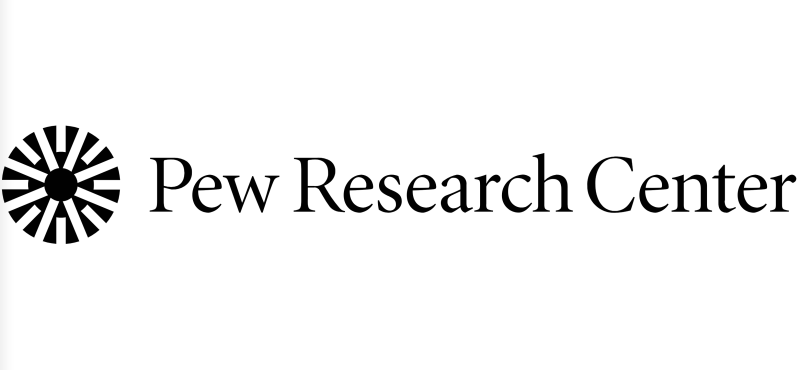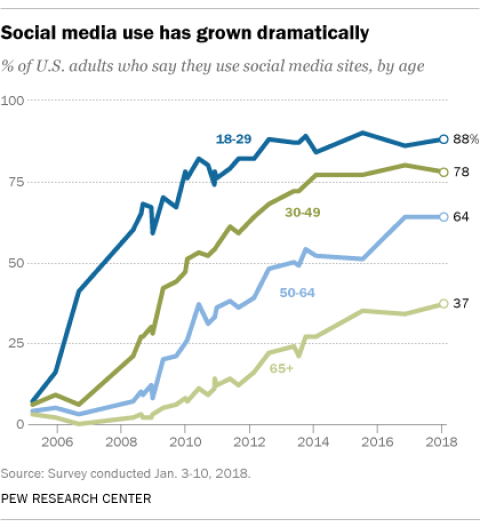
Citizen Journalism Today, PR Trends, Social Networking Sites, Press Release Templates, etc.
Citizen Journalism Today
Remember that in the US, you have the right to video any activity in a public space including the work of any public official.
The public has recorded violence and crime, which makes a huge difference in proving wrongdoing.
The Pew Research Center is an excellent and trustworthy source of information on trends.
In 2022, we need to be aware of algorithms, notably within Facebook (now Meta), which are used to provoke readers to stay within a social media platform and engage more. Angering us gets us more engaged. Be careful and aware of what platform algorithms are doing to manipulate what you do and where you spend your time. Also, know that a limited number of sources and users are contributing daily content used to provoke and engage us.
In February 2022, Pew reports that 25% of Americns get news via podcasts. Audio has become important as a way to present information, even on websites.
Most of use are fully aware of the daily role of misinformation. This week, Russia claimed it was pulling back from Ukraine, but there was no truth to the claim.
2006 Post on PR and Social Media
This post comments on is a well-considered blog entry (17 July 2006) by Andy Lark on trends affecting PR, such as the influence of social networking on public relations.
1.) Certainly citizen journalism is immediate and ubiquitous, but it doesn't replace professional journalists. There are micro channels, but for our clients this has not changed the basis of competition. In addition, many on the bleeding edge flock to the many innovative offerings of Web 2.0 companies. However, those of us that test the many new offerings do not constitute a mainstream audience for these services. Many Web 2.0 offerings are interesting, but not ubiquitous, unique - or more importantly critical. There are a very few Web 2.0 offerings provide reach to targeted audiences - and large audiences.
2.) A truly effective user interface that is a gateway to an integrated suite of useful applications (whether from Apple, Microsoft, or whatever firm) is appealing.
3.) Community creation forums, such as the Wiki, are creating ever higher expectations for collaboration software for corporations and consumers. Wikis are useful and informative, but I keep wondering when people will stop posting for free to Web sites that ultimately own all the content (check the Terms and Conditions at MySpace or YouTube).
To me, the effect of blogging on content is similar to the decline in care and time taken to write letters - with e-mail and them IMing providing an immediate, yet less polished result. This reminds me of the quote of Blaise Pascal, who said "Si j'ai écrit une si longue lettre, c'est parce que je n'ai pas eu assez de temps pour l'écrire plus courte." It translates to "If I wrote a long letter, it's because I didn't have enough time to write one shorter."
4.) The idea of building the functionality you want within an application is very appealing. It was remarkable how Apple responded to the market demand for podcasting, to the point that Apple put "pod" (as in iPod) in podcast. Microsoft's early adoption of RSS is a good example of quickly getting on board a winning trend.
5.) The participatory communicator is an interesting idea, but not well executed = authentically executed. More later in this entry. I liked his comment on Joga.com, but was a little surprised that as a soccer player, I had never run across it. I think there are many failed attempts to target and reach a community. It is certainly true that this is a real time of flux for the advertising marketplace - with the changes effecting budgets and spending, which changes companies and careers. However, you can gather visitors to one-off entertainment, which I think describes YouTube. It remains true that communities consistently excellent and authentic content is very difficult for corporations to create consistently. Notice that at last comment fits traditional PR activities as easily as it does the latest attempts at community building.
1.) The idea of companies hiring "conversationalists" to ignite conversations rather than just transmit the latestst information (press release, story pitch, etc.) is not really new. I believe that all good media relations, public relations, and communications require good conversationalists, persons that can write, speak, and even pitch in the authentic language of both the reporter/editor and the audience. So, every communication requires authenticity to be well-received. This authenticity is what generates a conversation, either with the reporter/editor or - most recently - with the audience at the online community.
2.) No question that media continues to fragment - and I'm not sure it will reassemble. Targeting audiences at the locations (such as online communities) where they aggregate is the latest challenge. In addition to the fractionating audience, there are many new channels and technologies to reach these divergent audiences. Citizen editors are not paid and I wonder if they will stick it out for the long-term or just experiment in today's fascinating and empowering environment of citizen journalism.
3.) The market will judge the authenticity of these ignited conversations as the market develops.
4.) Yes. As a proponent of quality (think W. Edwards Deming), measurement is a critical part of continuous improvement. As new technologies and methods (think Web 2.0 companies) emerge, testing what works is key to spending marketing dollars in the right place.
5.) Several factors influence the format of a Press Release. The new format offered by Shift is certainly valid - and better - for certain markets. Factors, such as the desired audience, which can still be a reporter or editor, who may be less interested in other formats (e.g., video or PDF), additional material (i.e., photo and logo), and additional contacts (Should everyone have direct access to the spokesperson? Does the CEO want to handle each media inquiry from the outset?). Plus, Digg, del.icio.us, and Technorati ranking may help some PR clients by reaching the right audience, but not all. Technorati mentions that a recent Pew Internet study claims there are 75,000 new blogs a day. I note that even being in the top 3% of sites tracked by Technorati won't help much because they track 48.9 million sites and 2.7 billion links as of the date of this post. 6.) RSS feeds are great and the more targeted the better. For our clients, they should maintain this on their Web sites.
7.) Media Planning is one way to talk about publicity strategy and tactical execution. Our firm often faces competitors that talk the "integrated marketing" story, while having little PR expertise and no effective integration. Similarly, the largest firms in the Advertising industry continue to acquire firms in tangential markets, such as PR, Web deb, etc. These roll-up efforts maintain revenue growth, but have little effect on the companies in our market.
8.) The lack of technology savvy in the PR is no surprise to us.
9.) Mr. Lark mentions the many hosted applications that are increasingly available and which will certainly change the way everyone works. I see a real need to integrate these into a single system that truly serves the need of the client. Point solutions are fine ways to prove technologies and gain markets. Suites of integrated, logically consistent functionalities are what clients (and agencies) want.
10.) OPML is an XML format commonly used to exchange lists of RSS feeds between RSS aggregators.
This allows a RSS news feed to be integrated into another application, such as a PIM (Personal Information Manager).
----- PING: TITLE: Jim Caruso said... URL: http://www.typepad.com/services/trackback/6a00d8341c381553ef00d834d5dac269e2
BLOG NAME: Andy Lark's Blog - Andrew Lark: Big Trends Done Quickly DATE: 07/19/2006 09:54 PM
This is insightful and well-considered. My only concern is the authenticity of "conversationalists" and the "ignited conversations" - an issue with even traditional media relations and PR. The interaction between PR staff and the audience must be meaningful - or else the staffer is just a distributor of information and not able to spark a conversation with the audience (reporters/editors or prospects/customers). A common issue with PR staff, internal or agency, is speaking in the "language" of the audience. The ability to pitch a story (traditional PR) is this sames ability to ignite the conversation online (given the tech savvy).
Here are three links for those who want to go straight to Pew:

